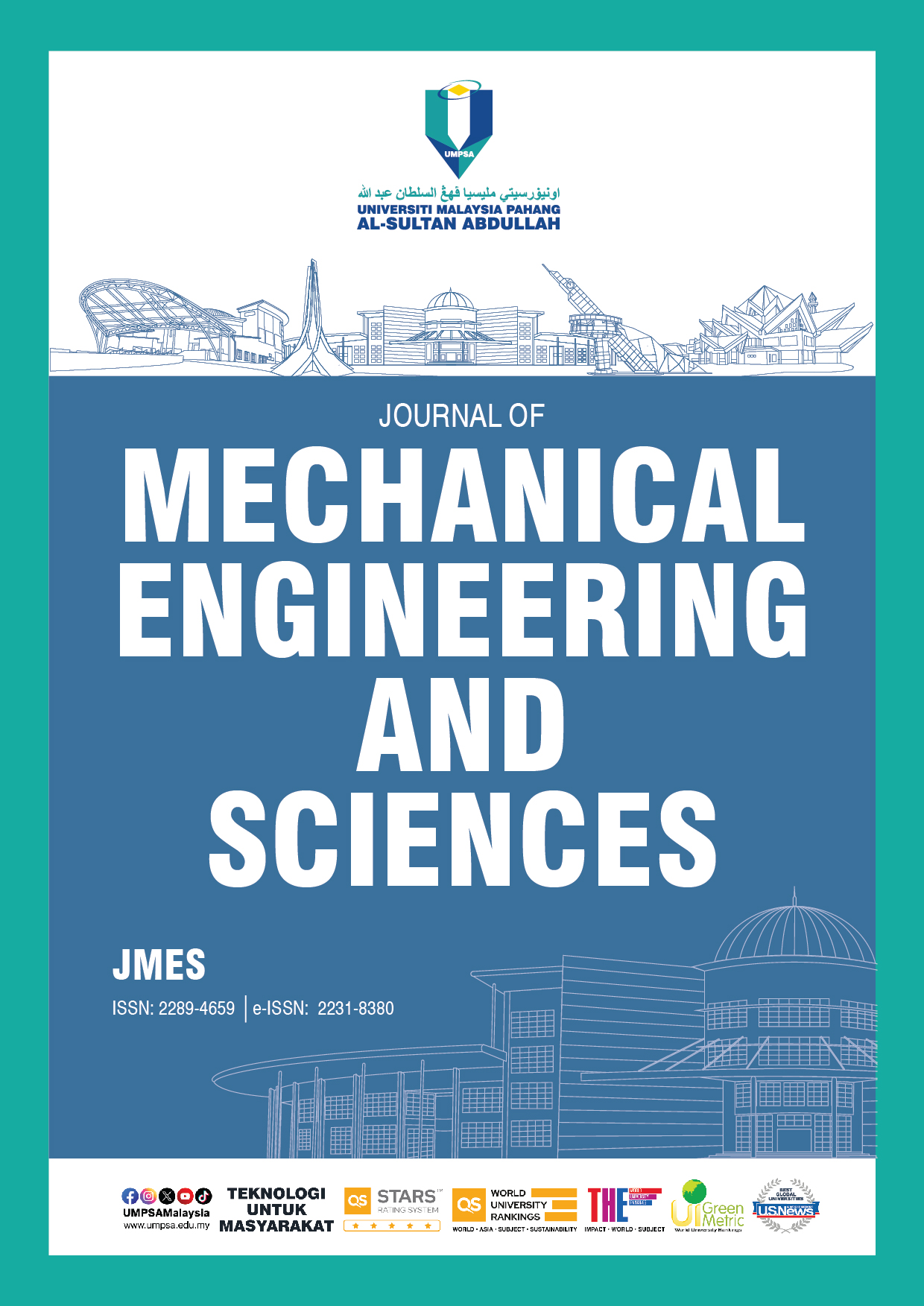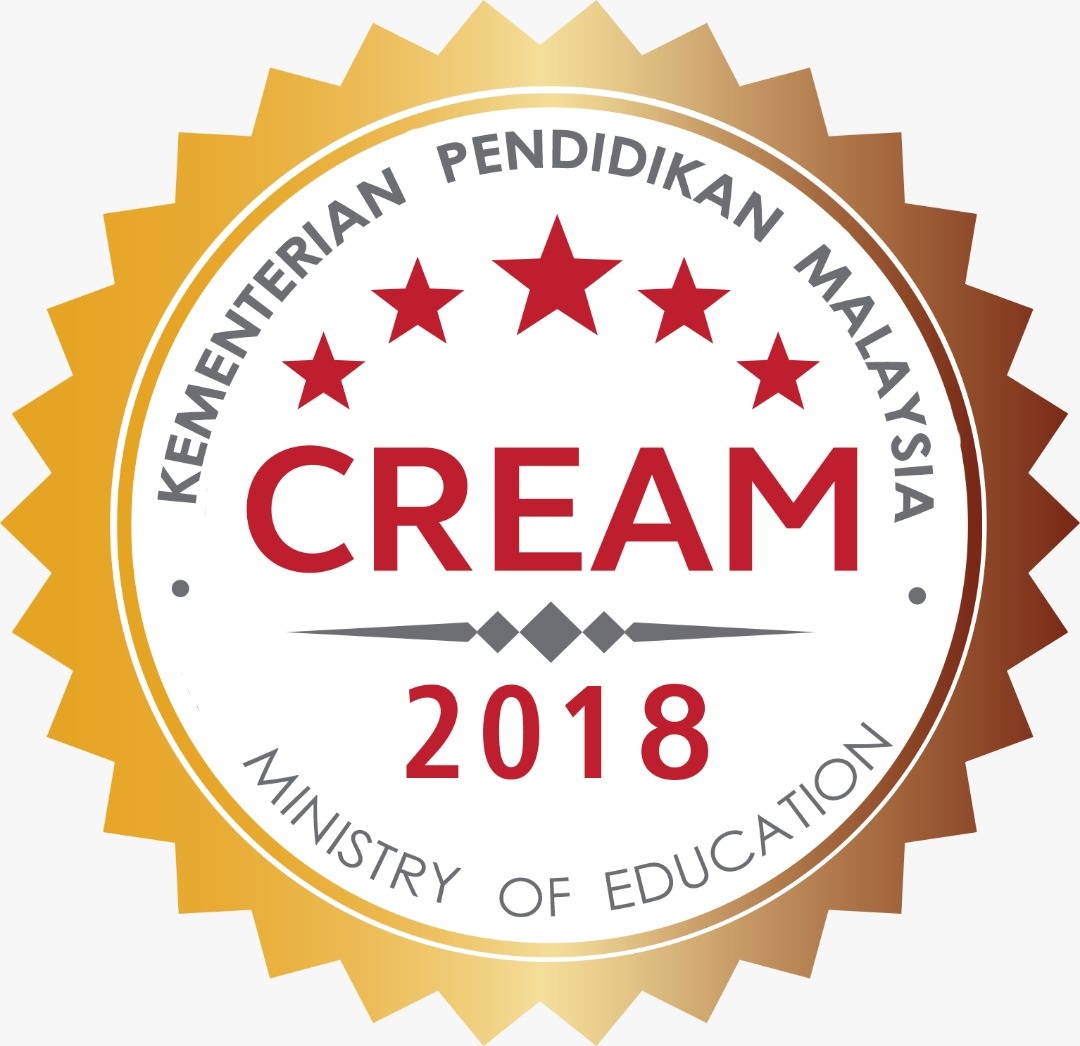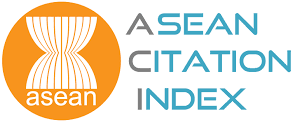The analysis of grid independence study in continuous disperse of MQL delivery system
DOI:
https://doi.org/10.15282/jmes.17.3.2023.5.0759Keywords:
Minimum Quantitiy Lubricant (MQL), Sustainable, Grid independence, Mesh analysis, Computational Fluid DynamicsAbstract
A sustainable cutting method of Minimum Quantity Lubricant (MQL) was introduced to promote lubrication effect and improve machinability. However, its performances are very dependent on the effectiveness of its mist to penetrate deep into the cutting zone. Optimizing the MQL system requires massive experimental work that increases cost and time. Therefore, this study conducts Computational Fluid Dynamic (CFD) analysis using ANSYS Fluent and focuses on the grid independence study in dispersed-continuous phase of MQL delivery system. The main aim is to identify the best mesh model that influences the accuracy of the CFD model. The analysis proposed two different unstructured grid cell elements of quadrilateral and triangular that were only applicable for 2-dimensional fluid flow in CFD. The unstructured grid was controlled with three different mesh quality factors such as Relevance Center, Smoothing, and Span Angle Center at coarse /low, medium, and fine /high. The results showed that the best mesh quality for quadrilateral was at 60,000 nodes number and coarse mesh, whereas the triangular was at 90,000 nodes number and coarse mesh. Both combinations resulted the most consistent and reliable result when compared with past studies. However, this study decided to choose quadrilateral cell element with 60,000 nodes number and coarse mesh as it is considered to be sufficient to provide accurate and reliable result as well as practical in terms of computational time for the MQL model in CFD analysis.
References
N. H. Abdul Halim, C. H. Che Haron, J. Abdul Ghani, and M. F. Azhar, “Response Surface Methodology (RSM) based analysis for tool life optimization in cryogenic CO2milling of Inconel 718,” IOP Conference Series: Materials Science and. Engineering, vol. 606, no. 1, pp. 1 -10, 2019.
G. Zhu, S. Yuan, X. Kong, C. Zhang, and B. Chen, “Experimental observation of oil mist penetration ability in minimum quantity lubrication (MQL) spray,” Journal of MechanicalScience and Technology, vol. 34, no. 8, pp. 3217–3225, 2020.
K. L. J. Kiat, N. I. K. Ismail, N. Rosli, and E. A. Alias, “Study of nozzle distance and oil flow rate effects on the droplets size of minimum quantity lubrication,” IOP Conference Series: Materials Science and Engineering, vol. 1062, no. 1, 2021.
G. Zhu, S. Yuan, and B. Chen, “Numerical and experimental optimizations of nozzle distance in minimum quantity lubrication (MQL) milling process,” International Journal of Advanced ManufacturingTechnology, vol. 101, no. 1–4, pp. 565–578, 2019.
Z. Q. Liu, X. J. Cai, M. Chen, and Q. L. An, “Investigation of cutting force and temperature of end-milling Ti-6Al-4V with different minimum quantity lubrication (MQL) parameters,” in Proceedings of the Institution of Mechanical Engineers, Part B: Journal of Engineering Manufacture, vol. 225, no. 8, pp. 1273–1279, 2011.
W. El-Bouri, I. Deiab, K. Khanafer, and E. Wahba, “Numerical and experimental analysis of turbulent flow and heat transfer of minimum quantity lubrication in a turning process using discrete phase model,” International Communications in Heat Mass Transfer, vol. 104, pp. 23–32, 2019.
K. Khanafer, I. Deiab, and W. El-Bouri, “Numerical analysis of flow and heat transfer of minimum quantity lubrication in a turning process using inconel alloy,” The International Journal of Advanced Manufacturing Technology, vol. 108, pp. 475–483, 2020.
Y. You, S. Wang, W. Lv, Y. Chen, and U. Gross, “A CFD model of frost formation based on dynamic meshes technique via secondary development of ANSYS fluent,” International Journal of Heat and Fluid Flow, vol. 89, p. 108807, 2021.
A. S. Awale, M. Vashista, and M. Z. Khan Yusufzai, “Multi-objective optimization of MQL mist parameters for eco-friendlygrinding,” Journal of Manufacturing Processes, vol. 56, pp. 75–86, 2020.
Z. Zan, K. Guo, J. Sun, X. Wei, Y. Tan, and B. Yang, “Investigation of MQL parameters in milling of titanium alloy,” The International Journal of Advanced Manufacturing Technology, vol. 116, no. 1–2, pp. 375–388, 2021.
X. Xu, H. Li, and Y. Lin, “Mesh-order independence in CFD simulation,” IEEE Access, vol. 7, p. 119069–119081, 2019.
S. Knotek, S. Schmelter, and M. Olbrich, “Assessment of different parameters used in mesh independence studies in two-phase slug flow simulations,” Measurement: Sensors, vol. 18, pp. 3–6, 2021.
A. Iranzo, B. Toharias, C. Suárez, F. Rosa, and J. Pino, “Dataset and mesh of the CFD numerical model for the modelling and simulation of a PEM fuel cell,” Data in Brief, vol. 41, p. 107987, 2022.
P. M. Roveto, A. Gupta, and A. J. Schuler, “Effects of surface skewness on local shear stresses, biofilm activity, and microbial communities for wastewater treatment,” Bioresouce Technology, vol. 320, p. 124251, 2021.
A. R. Y. and K. K. M. S. Najiha, M. M. Rahman, M. Kamal, “Minimum quantity lubricant flow analysis in end milling process: A computational fluiddynamics approach,” Journal of Mechanical Engineering and Sciences, vol. 3, pp. 340–345, 2012.
O. Pereira, A. Rodríguez, J. Barreiro, A. I. Fernández-Abia, and L. N. L. de Lacalle, “Nozzle design for combined use of MQL and cryogenic gas in machining,” International Journal of Precision Engineering and Manufacturing -Green Technology, vol. 4, no. 1, pp. 87–95, 2017.
S. Subramani, S. Nantha Muthu, and N. L. Gajbhiye, “A numerical study on the influence of minimum quantity lubrication parameters on spray characteristics of rapeseed oil as cutting fluid,” Industrial Lubrication and Tribology, vol. 74, no. 2, pp. 197–204, 2022.
S. M. Mousavi, A. Jafari, S. Chegini, and I. Turunen, “CFD simulation of mass transfer and flow behaviour around a single particle in bioleaching process,” Process Biochemistry, vol. 44, no. 7, pp. 696–703, 2009.
Y. Xu, J. Yuan, J. U. Repke, and G. Wozny, “CFD study on liquid flow behavior on inclined flat plate focusing on effect of flow rate,” Engineering Applications of Computational Fluid Mechanics, vol. 6, no. 2, pp. 186–194, 2012.
A. S. Putri, R. Amalia, T. H. Ariwibowo, and F. H. Sholihah, “Thermal characteristics of tube economizer with serrated fin,” International Electronics Symposium 2021: Wireless Technologies Intelligent Systems for Better Human Lives, IES 2021 -Proceedings, pp. 399–404, 2021.
T. Obikawa, Y. Kamata, Y. Asano, K. Nakayama, and A. W. Otieno, “Micro-liter lubrication machining of Inconel 718,” International Journal of Machine Tools & Manufacture, vol. 48, no. 15, pp. 1605–1612, 2008.
R. W. Luís, S. Carlos, and S. Paulo, “Grid convergence study of a cyclone separator using different mesh structures,” vol. 55, no. 16, pp. 1–22, 2016.
S. A. Chowdhury, M. N. Islam, and B. Boswell, “Temperature determination at the chip-tool interface using a computational fluid dynamics package,” International Journal of Computer Applications in Technology, vol. 60, no. 1, pp. 27–36, 2019.
T. Wu, X. Liu, W. An, Z. Huang, and H. Lyu, “A meshoptimization method using machine learning technique and variational mesh adaptation,” Chinese Journal of Aeronautics, vol. 35, no. 3, pp. 27–41, 2022.
L. N. López De Lacalle, C. Angulo, A. Lamikiz, and J. A. Sánchez, “Experimental and numerical investigation of the effect of spray cutting fluids in high speed milling,” Journal of Materials Processing Technology, vol. 172, no. 1, pp. 11–15, 2006.
E. A. Rahim, H. Dorairaju, N. Asmuin, and M. H. A. R. Mantari, “Determination of mist flow characteristic for MQL technique using Particle Image Velocimetry (PIV) and Computer Fluid Dynamics (CFD),” Applied Mechanics and Materials, vol. 773–774, pp. 403–407, 2015.
N. Nordin, E. Benard, A. H. A. Kamal, and M. T. Ahmad, “Prediction of flow pattern behaviour behind square cylinder using computational fluid dynamic (CFD) approach,” International Journal of Integrated Engineering, vol. 12, no. 5, pp. 137–145, 2020.
C. Groth, E. Costa, and M. E. Biancolini, “RBF-based mesh morphing approach to perform icing simulations in the aviation sector,” Aircraft Engineering Aerospace Technology, vol. 91, no. 4, pp. 620–633, 2019.
N. E. Ahmad, E. Abo-Serie, and A. Gaylard, “Mesh optimization for ground vehicle Aerodynamics,” CFD Letters, vol. 2, no. 1, pp. 54–65, 2010.
M. Falcone, L. Buss, and U. Fritsching, “Model assessment of an open-source Smoothed Particle Hydrodynamics (SPH) simulation of a vibration-assisted drilling process,” Fluids, vol. 7, no. 6, 2022.
P. Jadhav and R. Deivanathan, “Numerical analysis of the effect of air pressure and oil flow rate on droplet size and tool temperature in MQL machining,” in Materials Today: Proceedings, vol. 38, pp. 2499–2505, 2021.
Downloads
Published
Issue
Section
License
Copyright (c) 2023 Universiti Malaysia Pahang Publishing

This work is licensed under a Creative Commons Attribution-NonCommercial 4.0 International License.






